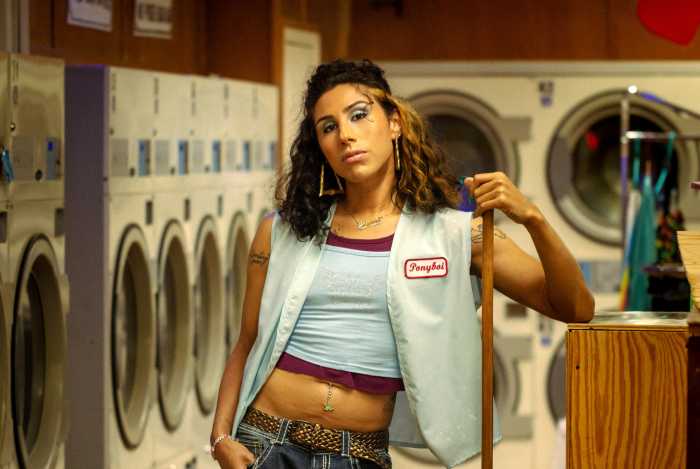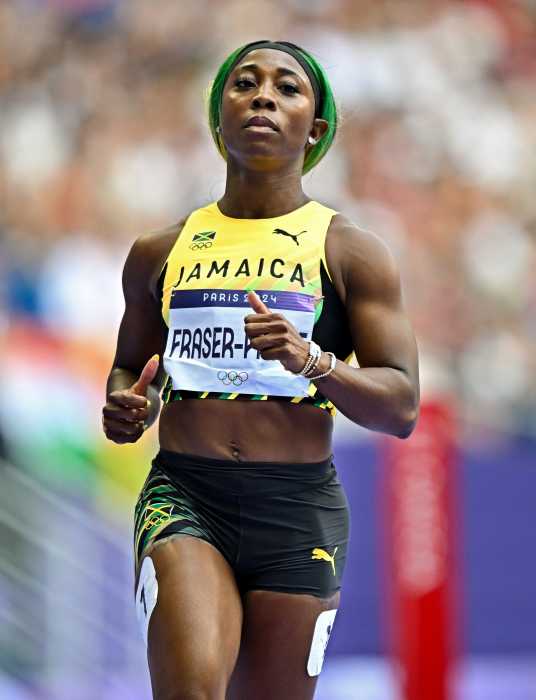Posthumous fame for East Village underground icon
Alive, dead, feathered, plucked. This fall, with just a little bit of effort, New Yorkers can visit the four compass points of photographer Peter Hujar’s world. Twin Palms Press has released a collection of the late photographers’ work, Animals and Nudes, which is among the more beautiful photography books of the season. Meanwhile, on exhibit at Matthew Marks gallery in West Chelsea, Hujar’s “Portraits of Life and Death,” an assembly of the prints from the out-of-print 1976 book that was Hujar’s only publication while alive, is on view. The photographs in the Marks show fall into two categories: portraits of the bohemian circle that sat for Hujar (or, more accurately, lay for him, as many of his subjects are photographed on his bed). The second group of photographs in the show is a series of mummified cadavers in the catacombs of Palermo, Italy, taken twelve years earlier in 1963. Hujar may not yet be a household name, but since his death from AIDS in 1987, his work has enjoyed increasing attention that would have edified him had he lived to see it. His photography has recently been showcased in high profile places like The New Yorker and been the subject of solo retrospectives around the globe (though none yet in a New York museum). With his quiet soulfulness and his marriage of classical restraint with progressive subject matter, Hujar seems more and more like a crucial figure in the history of photography. As a portraitist, Hujar is the Nadar of post-Warhol New York; felicitously, his work documents one of the more interesting moments in gay history, the 70s and 80s in the East and West Villages. Hujar captured the lives of his fellow gay men (and to a lesser extent, women), in the salon, the bedroom, the sex club and even the Rambles. Hujar’s work has much in common with Robert Mapplethorpe’s, but in some ways it is the antidote to that photographer’s desire to shock. While Mapplethorpe created scandalous tableaux, Hujar quietly discovered and conferred beauty on the otherwise unseen and overlooked. Likewise Hujar himself was mostly unknown in his lifetime; his legendary temper made it difficult for him to negotiate with dealers, gallerists, and potential patrons. But he had followers, important photographers over whom he was quietly influential, like Diane Arbus, Lynn Davis, even Richard Avedon. His subject matter (drag queens, lowlifes, bed dwellers), and approach has had an immense influence on the so-called Boston School of Photography (photographers like Nan Goldin, David Armstrong, Jack Pierson, and Mark Morrissoe). Like Hujar, these photographers document the closed circuits of their own sexual underworlds. Until the mid-70s, Hujar supported himself as a fashion and celebrity portrait photographer for magazines like Harper’s Bazaar. Then he bolted from that world, and never looked back, despite the financial hardships he endured. Ensconcing himself in a studio on Second Avenue bequeathed him by Warhol superstar Candy Darling, Hujar photographed the friends and tricks he lured there, and waited for the success that never came. The two elements in the show at Matthew Marks—the portraits and the cadavers—make for a compelling contrast. Hujar’s portraits act first as social artifacts, a who’s who of the downtown intelligentsia, circa 1975. The poet John Ashbery sits for Hujar’s camera, and emerges owlish, if plucked. It’s a surprise to see the eternally youthful John Waters in his actual youth, looking unknowing, if not exactly innocent. In a separate portrait, Waters’ muse, Divine, sits odalisque-style, sans wig. And there is Susan Sontag, supine on a bed, wearing a turtleneck sweater, her shock of raven hair testimony to how much her physical glamour added to her intellectual appeal. Sontag wrote the introduction to Hujar’s 1976 book. It’s an appropriate gesture: About Photography, one of the books that added greatly to Sontag’s reputation, was published years after she wrote the introduction to Hujar’s book. But her thesis in both essays is the same: that to take a photograph is to sound the death knell of the present, to kill the moment, in a sense. It’s a point that Hujar’s juxtaposition of the living and the dead in this exhibit suggests with chilling insight. This sentiment is even more poignant in Hujar’s nude studies, since, with the benefit of hindsight, we’re aware that the sensuality so lovingly captured there would soon be ravaged by the arrival of AIDS. “Peter was a genius about sex,” says Hujar’s close friend Fran Lebowitz in an interview included in an earlier Hujar monograph. “I mean, he knew. He said the smartest things about sex.” We don’t have a record of Hujar’s utterances, but we do have the work, recently collected in Animals and Nudes, a soulful and intelligent look at subjects usually rendered vapidly. Hujar’s nudes breathe in an atmosphere of intimacy. Nan Goldin once remarked, “Hujar’s nudes are the closest I’ve come to knowing what it is to inhabit male flesh.” In one Hujar photo, a young man with a lean and hungry look sits, letting his limbs fall back naked over a chair in a bare room lit by morning sun. In his fist, he holds his erect penis, and gazes at it thoughtfully. It is a provocative gesture, but not a pornographic one. In another photograph from the book—one of my favorites—a young man with yogic flexibility sits in his chair, leans forward, and inserts his toe into mouth. (Delicious!) What Hujar reveals to us in this work is that eros is strange and not a staged strangeness, as in Mapplethorpe, but a genuine one. This is where the profound undertow in Hujar’s work can be located. For it is of course eros’ partner, thanatos, or death, that we will meet as the ultimate stranger. Lebowitz reports that on his deathbed, Hujar confessed that he regretted his sexual exploits (he once boasted having slept with more than a thousand men). She says, “He never enjoyed it once.” Then why did he do it? “‘It was just the way I was trying to be with people,’” he replied.
































